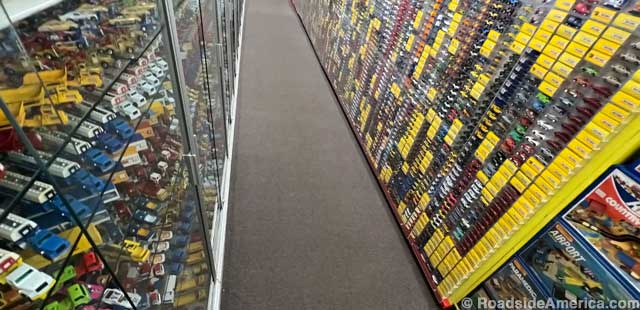
A view inside a Matchbox collector's brain: Matchbox vehicles everywhere.
Matchbox Road Museum
Newfield, New Jersey
"I pretty much know where everything is and what I have and don't have," said Everett Marshall III, founder of the Matchbox Road Museum. Everett's confidence is exceptional because his museum -- the only one in the world, as far as he knows, devoted to Matchbox products -- is packed with around 60,000 different, and often identical-looking, tiny metal cars and trucks -- with several thousand more waiting to be added when Everett has the time.
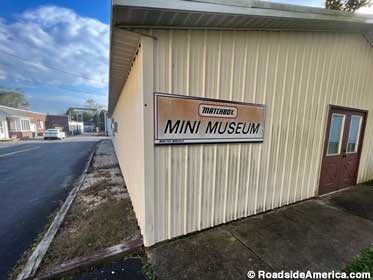
The "Mini" is misleading; there are 60,000 vehicles inside.
Walking into the museum must be like wandering into Everett's brain. Wherever you turn, the walls on both sides and directly in front are floor-to-ceiling with Matchbox cars, flickering like synapses in your peripheral vision.
Everett told us that the museum came about by accident; the building originally stored supplies for his trucking company. When the local fire marshal told Everett to clean it out, he did -- then filled it with his collection of non-combustible tiny cars.
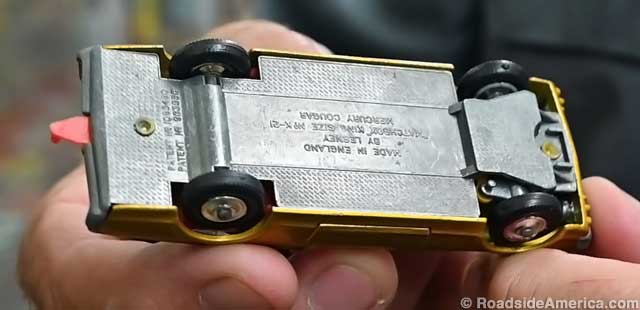
Important information, stamped into the bottom of a collectable Matchbox car.
It was a lucky break, possibly saving him from the fate of a fellow collector in Connecticut who, Everett confided, is literally walling himself into his home with his Matchbox car collection. "He's even covered over his fireplace," said Everett. "He lives by himself."
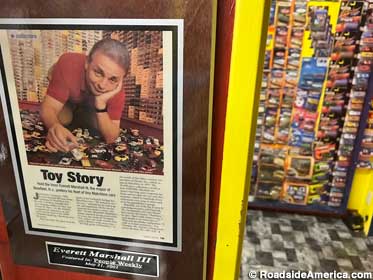
Museum owner Everett Marshall III is surrounded by his hobby.
Matchbox vehicles were originally made small enough to be sold inside replica matchboxes, creating a box-toy bond that collectors -- who've been around since the 1960s -- find irresistible. One time, Everett recalled, he purchased some Matchbox vehicles in their boxes as a Christmas present for his son. He wife thought that they were stocking-stuffers, so she wrapped each car individually and threw the boxes away. Everett had to go out and buy them all over again.
"There are boxes that are worth more than the cars inside them," Everett said. Less-valuable boxes are used as spacers in the museum's vehicle-walls, indicating where a certain model is missing or is waiting to be added from Everett's off-site stash.
The museum's 60,000 vehicles sounded like too many to us -- Have there really been 60,000 different vehicles? -- but Everett explained that the numbers are misleading because of variations: small alterations in individual models. Despite appearances, Everett said, the museum really doesn't have 18 of the same red car or 30 of the same blue truck; all are slightly different. Those individual characteristics can easily escape the untrained eye. "One guy called me and said, 'I got this Matchbox and it says in a book that it's worth a thousand dollars,'" Everett said. "And I asked, 'What color wheels does it have?' And he said, 'Black.' And I said, 'Well, it's worth about eight dollars.'"
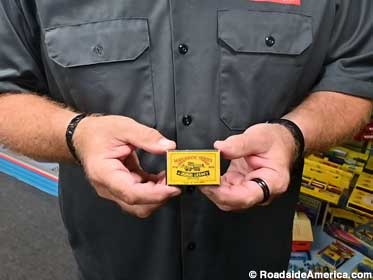
1950s box shows the scale of the early Matchbox cars.
Variations complicate Matchbox collecting considerably, said Everett, because, first, you have to determine if your variation really is a variation and not just a production line mistake -- which would not be very valuable -- and, second, you have to accept that "there's no way in the world to know how many variations there are. No one kept track." We imagined that this would make Matchbox a frustrating choice for a museum collection, but Everett seemed not to mind. "It'll never be finished," he said.
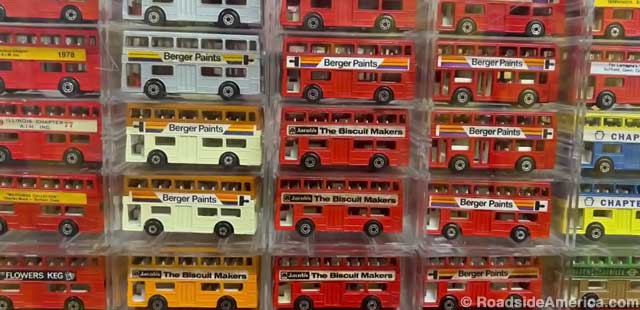
Can you spot the differences in each of these buses?
Even more daunting is the Matchbox Road Museum's display organization. Everett has arranged the walls by model number, but Matchbox often changes the numbers, or gives new numbers to old vehicles. The spacer boxes help with known variations, but when new variations are discovered it can throw an entire wall of cars out of whack; the plexiglass shielding has to be removed and every single vehicle has to be moved. This, said Everett, is one of the reasons why so many of his new acquisitions remain undisplayed; he hasn't had the time to get together with his fellow hobbyists to shift all of the cars in the museum into their new, updated places.
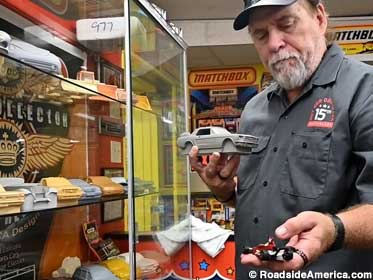
Museum guide Charlie Van Leuven and some pre-production design models.
(The same problem faced Jerry Roth at Jerry's Hat Museum, but because he essentially created his own hobby he was free to abandon its organization when it became overwhelming).
Everett has expanded his collection with one-of-a-kind Matchbox prototypes, design models, and even his own original cars from the 1950s, which he repainted in "better colors" as a kid and thus rendered valueless (although not to him). The oldest Matchbox cars often suffered this kind of kids-being-kids abuse. Countless future collectibles failed to escape an encounter with a rogue hammer, or a hungry dog, or a firecracker in the passenger seat.
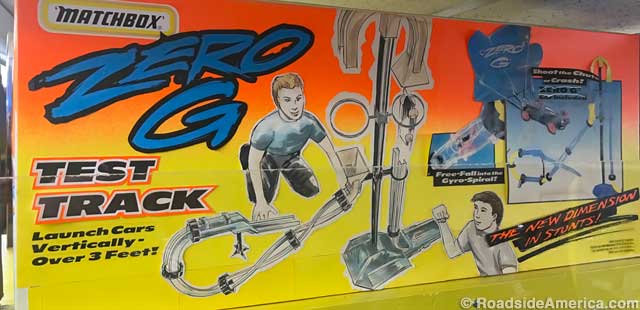
Concept art for the Zero G Test Track; the final box did not look this wonky.
One thing definitely not in Everett's museum are Hot Wheels -- another collector favorite, and Matchbox's one-time biggest competitor. Everett has no interest in them. "Hot Wheels were cheap; they were crazy," he said. "And they never came in boxes."
Everett opened the museum in 1992 and later retired to Florida, although he makes frequent return trips and is still very much a hands-on collector and curator. When you visit the museum your host will likely be one of Everett's long-time friends and fellow matchbox enthusiasts, who all share Everett's obsession with well-made tiny metal vehicles.
"We're just enjoying ourselves," Everett said of the museum, despite the amount of work necessary to keep the collection in order. "It's not a business. It's a happy place."





